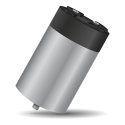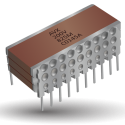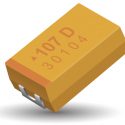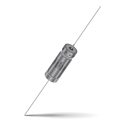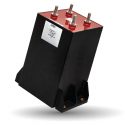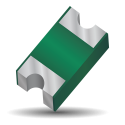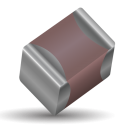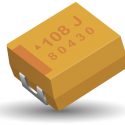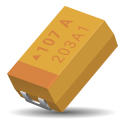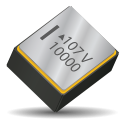Evolution of Power Capacitors for Electric Vehicles Written By: Gilles Terzulli Abstract: Electric vehicles are in widespread use. Hybrid cars are now a common sight on our roads as people look to find more environmentally-friendly forms of personal transport, and there are many other commercial and public electric vehicles, such as trains, trams, buses and industrial trucks and equipment in everyday use. The electronic systems and components that have enabled the realisation of such a wide variety of electric vehicles have all experienced a major evolution, including the DC link power capacitor. The purpose of capacitors in electric vehicles is to prevent ripple currents from reaching back to the power source, and to smooth out DC bus voltage variations. Capacitors
Technical Articles / Whitepapers
Capacitors for High Temperature Applications Written By: Martin Barta | Slavomir Pala | Stanley P. Cygan Abstract: Traditionally, the main market for high temperature electronics is the downhole oil and gas industry. However, the avionics, automotive and many other industries also have applications which share the same key requirements of reliability under harsh operating conditions, including high humidity and dust, and the ability to withstand shock and vibration. Resistors and capacitors are ubiquitous in any electronic device and system. The lack of reliable hightemperature, high value capacitors has almost certainly limited growth in these newer applications. Most current capacitor technologies on the market, such as aluminium electrolytics or film capacitors, are limited to a maximum temperature range of 125ºC –
A Multilayer Approach to Transient Voltage Supressors Written By: John Maxwell | Ning Chan | Allen Templeton Abstract: Improvements in integrated circuits have resulted in increased speed and increased ESD sensitivity. New systems require external protection more than ever before but advances in surface mount technology and product miniaturization place severe size constraints on protection components. Advances in ceramics now allow transient voltage suppressors to be built with multilayer structures resulting in improved electrical performance and in smaller sizes than comparable disc configurations. Clamping voltage and peak current performances approaching zener diode transient suppressors are achieved in the common 1206 (3.2 x 1.6mm) chip size, one third the size of SMT disc varistors or SMT zener diode supressors.
The Accu-L Multi-Layer Inductor for High Frequency Applications Written By: Barry N. Breen | Chaim Goldberger | Leonid Talalavsky Abstract: The telecommunications industry today is undergoing changes. The miniaturization of electronic circuits and the use of higher frequencies in radio communication systems such as Cellular Telephones, PCN and GPS places new demands on passive components. High frequency inductors have not kept pace with the demands. AVX has responded to these requirements by putting to market a miniature (0805) high frequency SMD inductor based on thin film technology. This article presents the basic concepts of high frequency inductors and how such low value inductors are measured and characterized. Here, too, there is a lag between the high frequency designer’s need for
Basic Tantalum Capacitor Technology Written By: John Gill Abstract: This paper covers the general manufacturing techniques used to make a solid tantalum capacitor. The purpose of this paper is to give the layperson an understanding of current tantalum technology.
Film Technology To Replace Electrolytic Technology Written By: Gilles Terzulli | Billy W. Peace Abstract: Since 1980, great improvements have been made on DC filter capacitors using a combination of metallized plastic films and different segmentations of the metallization on those film dielectrics. Volume and weight have been reduced by a factor of 3 or 4 over the last years. Now film manufacturers have developed thinner films and have improved segmentation techniques used on the metallization which has helped immensely in the improvement of such capacitors. Using non-gas impregnated designs, the voltage ranges between 600 VDC and 1200 VDC can be more economically covered by film capacitors rather than electrolytic. Depending on the application, over 1200 VDC, vegetable oil-filled versions
AVX TWA Series Wet Tantalum Capacitors DSCC 93026 & Beyond Written By: Brian Brunette Abstract: Wet tantalum capacitors have been utilized for many years in high energy storage applications where volumetric efficiency and high reliability are essential requirements. This paper describes the next generation of high CV (capacitance/voltage) wet tantalum technology which is enabling higher efficiency and higher reliability capacitor designs, extending application capabilities.
Energy and Power Handling Capabilities of Thin Film and Ceramic Capacitors Written By: Ben Smith Abstract: A continual growth of uncertainty and misconception has been prevalent in determining the power and energy capabilities of both ceramic and silicon capacitors. As today’s systems are subjected to increasingly more stringent requirements, designers are faced with numerous situations where the components that are used dictate design configurations. This paper addresses the concepts associated with a capacitor’s ability to withstand power and energy. Both theoretical and empirical models are developed and used to provide design guidelines.
Film Technology To Replace Electrolytic Technology in Wind Power Applications Written By: Gilles Terzulli Abstract: Aluminium electrolytic capacitors present serious challenges for the designer of high voltage power systems required in the very latest wind energy applications. In contrast, film technology offers significantly improved life expectancy, environmental performance and power handling capability.
Land Grid Array (LGA) Low Inductance Capacitor Advantages in Military and Aerospace Applications Written By: Sonja Brown Abstract: The benefits of Land Grid Array (LGA) capacitors and superior low inductance performance in modern military and aerospace designs.
Dielectric Absorption of Multilayer Organic (MLO™) Capacitors Written By: Edgardo Menendez Abstract: Capacitors with Dielectric Absorption (DA) recover some of their charge even after the capacitor has been fully discharged (see Figure 1). (Ref. 2) It is expressed in percentage and it is based on the measured voltage after discharging and charge recovery divided by the maximum voltage that was originally applied (see Equation 1)…
Introduction to Choosing MLC Capacitors For Bypass/Decoupling Applications Written By: Yun Chase Abstract: Methods to ensure signal integrity using decoupling capacitors have been the topic of many papers in the past as well as in the present. One can find equally many methods of decoupling as well. This paper will illustrate one of these established methods and introduce it in a theoretical sense using the most simplistic of terms. The paper will also describe the methods of the past (in slow speed systems) and the practices of the present (in high speed systems).
Application Guidelines on IR Reflow of Surface Mount Solid Tantalum Capacitors Written By: Steve Warden | John Gill Abstract: This paper tries to explain the factors which influence the ability of surface mount solid Tantalum capacitors to withstand present industry standard reflow technologies, and explores the peak temperature trends of industry IR reflow systems. *To assist you with the terminology used within this document a glossary is available through the AVX worldwide sales office
Analysis of Solid Tantalum Capacitor Leakage Current Written By: R. W. Franklin Abstract: The leakage current of a solid tantalum capacitor is the sum of several independent factors. From measurements of leakage over a range of test conditions some degree of separation of these components of the current can be achieved and so the relative importance of factors leading to high leakage can be assessed. There is a background level present directly related to dielectric absorption and it contributes to the loss factor of the capacitor. It is not a true leakage. On top of this absorption current there are other components, most of which are essentially by-passing the bulk of the dielectric. These can be moisture or manganese dioxide
Very High Frequency Switch Mode Power Supply Output Filter Capacitor Considerations and Mounting Limitations Written By: John Maxwell Abstract: This paper discusses output filter capacitor electrical limitations and considerations when used in 1MHz and above switch mode power supplies. Because surface mount components and assembly will be used to build these very high frequency switchers, physical mounting limitations, mechanical stress and assembly techniques are also discussed.
Advanced Test Methods for Up-screened Tantalum Capacitors Written By: Brian Brunette Abstract: Commercial-off-the-shelf capacitors are designed and tested for non-critical applications. AVX has developed a range of “COTS-Plus” tantalum capacitors with testing and reliability grading done in accordance with MIL-PRF-55365 and AVX proprietary methods to provide improved reliability on commercial ratings by removing weaker components within the populations. This paper will describe the criteria for selecting ratings appropriate for up-screening and describe the various tests that are standard and optional to demonstrate the improved reliability that results from these screening methods. Standard and “Space Level” options are described and compared to illustrate the scope of the COTS-Plus system.
